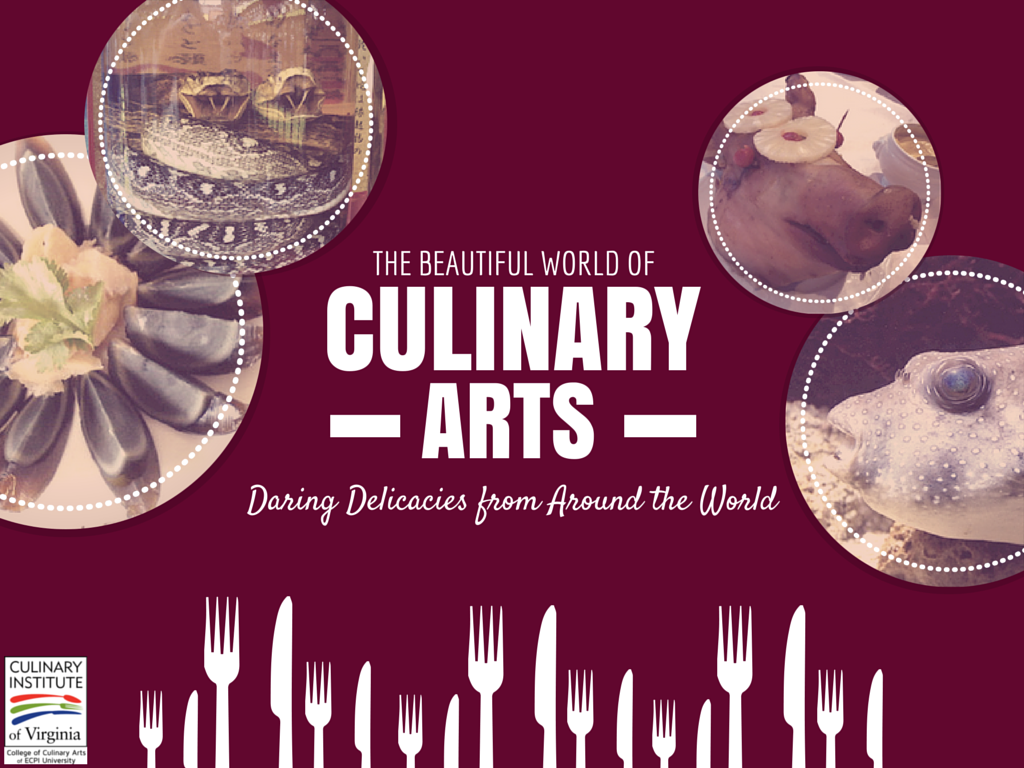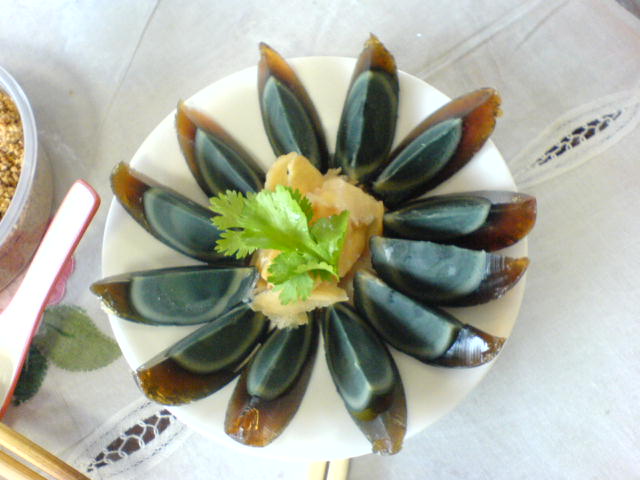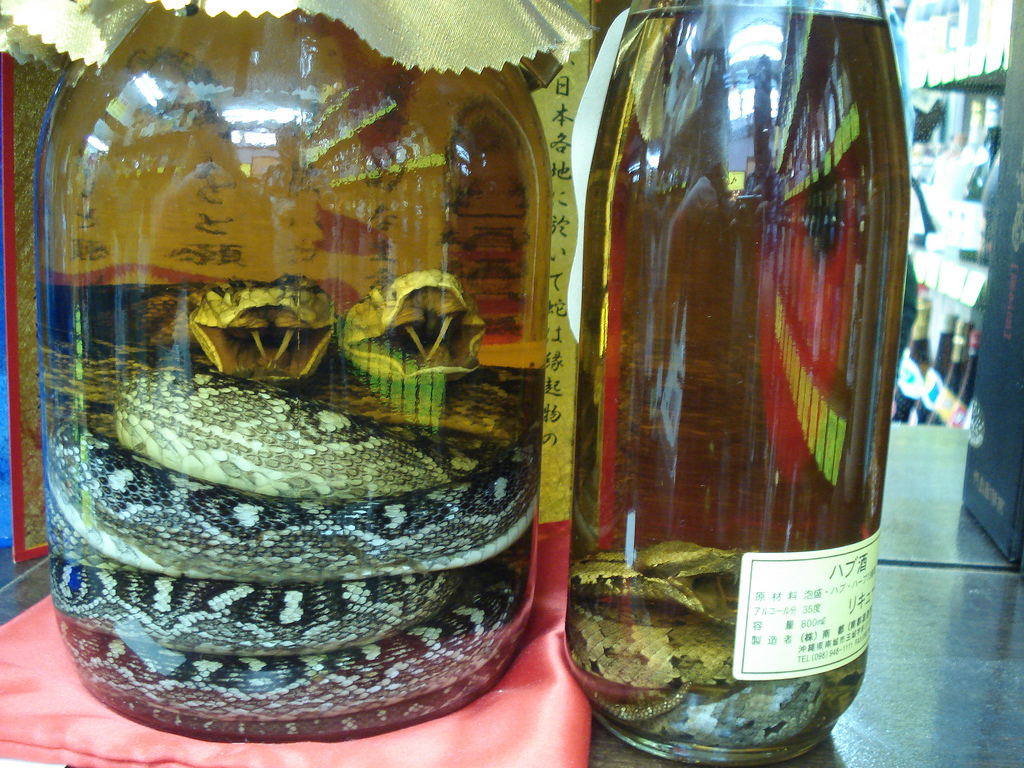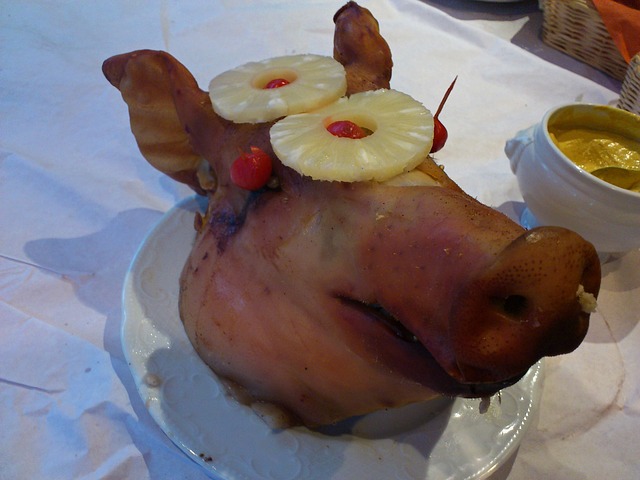 The beautiful world of Culinary Arts may be bigger and braver than you ever imagined! The rich history and traditions of any world culture often culminate in local delicacies, regional cuisines, and celebratory treats.
The beautiful world of Culinary Arts may be bigger and braver than you ever imagined! The rich history and traditions of any world culture often culminate in local delicacies, regional cuisines, and celebratory treats.
Here are 10 of the stranger and more dangerous culinary wonders you can find traveling the world:
1. Century Egg, China
 The century egg is a Chinese delicacy made by curing a duck, chicken, or quail egg in a mixture of clay, ash, salt, quicklime, and rice hulls for many weeks to many months.
The century egg is a Chinese delicacy made by curing a duck, chicken, or quail egg in a mixture of clay, ash, salt, quicklime, and rice hulls for many weeks to many months.
Through the process, the yolks turn a dark green or gray color and the whites become dark brown. The egg takes on a sulfuric or ammonia-like taste and smell, and though that may seem entirely unappetizing to westerners, the century egg is a common dish in China.
Likely this method of preparation came out of the need to preserve food before the time of refrigeration.
2. Fugu, Japan
Fugu is a Japanese preparation of the poisonous puffer fish of the same name. It is extremely poisonous to eat without being properly prepared, and chefs spend years as an apprentice before they are given a license to serve this dangerous dish.
Fugu is served as sashimi and chirinabe and, though people find the liver to be the most delicious part, it is also the most lethal and was banned from service in Japanese restaurants in 1984.
3. Balut, Phillipines
Balut is a common street food in the Philippines. It is a developing duck embryo, usually about 17-days-old, that is boiled and eaten out of its shell.
The diner drinks the liquid out of the egg before peeling it, and then the embryo can be seasoned with salt, chili, garlic and vinegar, lemon juice, pepper, or a mixture of seasonings.
4. Tiet Canh, Vietnam
Tiet Canh is a Vietnamese dish made from fresh, raw duck blood mixed with fish sauce to keep the blood from coagulating too quickly. Organ meats and peanuts are added and the dish can be served coagulated or in liquid form.
5. Snake Wine, Vietnam
 Snakes are not often harvested for their meat. They are, however, used to make snake wine. The snakes are placed in the rice wine, or other grain alcohol, and are allowed to have their venom dissolved into the liquor.
Snakes are not often harvested for their meat. They are, however, used to make snake wine. The snakes are placed in the rice wine, or other grain alcohol, and are allowed to have their venom dissolved into the liquor.
The venom is denatured by the ethanol, by unfolding the proteins, rendering the venom inactive.
6. Bird's Nest Soup, China
This Chinese soup is made from the nests of cave swift birds. The cave swift birds make their nests with their saliva, and when the saliva hardens, they have a nest.
These nests are among the most expensive animal products, costing on average $2,500 USD per kilogram. This is on account of their rarity and exquisite flavor.
7. Pacha, Iraq
Pacha is a boiled goat head stuffed with sheep's stomach and bread soaked in the cooking liquids.
Living in an age where most of the meat consumed comes from a slaughterhouse, and is already packaged in its edible sections, seeing whole parts of animals that are easily recognizable has become difficult for modern diners.
8. Suckling Pig, Asia | Europe | U.S.
 The suckling pig is another great example. Many people have a hard time eating a few-week-old baby pig that has been marinated and slow cooked for many hours. But if the diner was given a tender piece of pork with crispy skin apart from seeing the entire pig on a spit, that somehow makes for a very different dining experience.
The suckling pig is another great example. Many people have a hard time eating a few-week-old baby pig that has been marinated and slow cooked for many hours. But if the diner was given a tender piece of pork with crispy skin apart from seeing the entire pig on a spit, that somehow makes for a very different dining experience.
9. Rocky Mountain Oysters, U.S.
Even the United States has their share of interesting foods. Rocky Mountain Oysters, contrary to what may seem obvious, are not oysters. They are, in fact, bull calf testicles. They are sometimes pounded flat, then breaded and deep fried. They are commonly served as an appetizer with cocktail sauce.
10. Fried Brain Sandwich, U.S.
Americans love burgers. In addition to fried alligator burgers, bison burgers, venison burgers, and other not-so-common burger meats, the Midwestern states love to slice and fry up calf or pig brains and serve them like burgers.
Can You See Yourself in the World of Culinary Arts?
The world is full of interesting, scary, and sometimes dangerous meals! If you’re intrigued by the beautiful world of Culinary Arts, get in touch with the College of Culinary Arts at ECPI University TODAY to learn more about how you can earn an Associate of Applied Science in Culinary Arts in as little as 15 months through our year-round program. It could be the Best Decision You Ever Make!
DISCLAIMER – ECPI University makes no claim, warranty or guarantee as to actual employability or earning potential to current, past or future students or graduates of any educational program we offer. The ECPI University website is published for informational purposes only. Every effort is made to ensure the accuracy of information contained on the ECPI.edu domain; however, no warranty of accuracy is made. No contractual rights, either expressed or implied, are created by its content.
Gainful Employment Information
For more information about ECPI University or any of our programs click here: http://www.ecpi.edu/ or http://ow.ly/Ca1ya.



